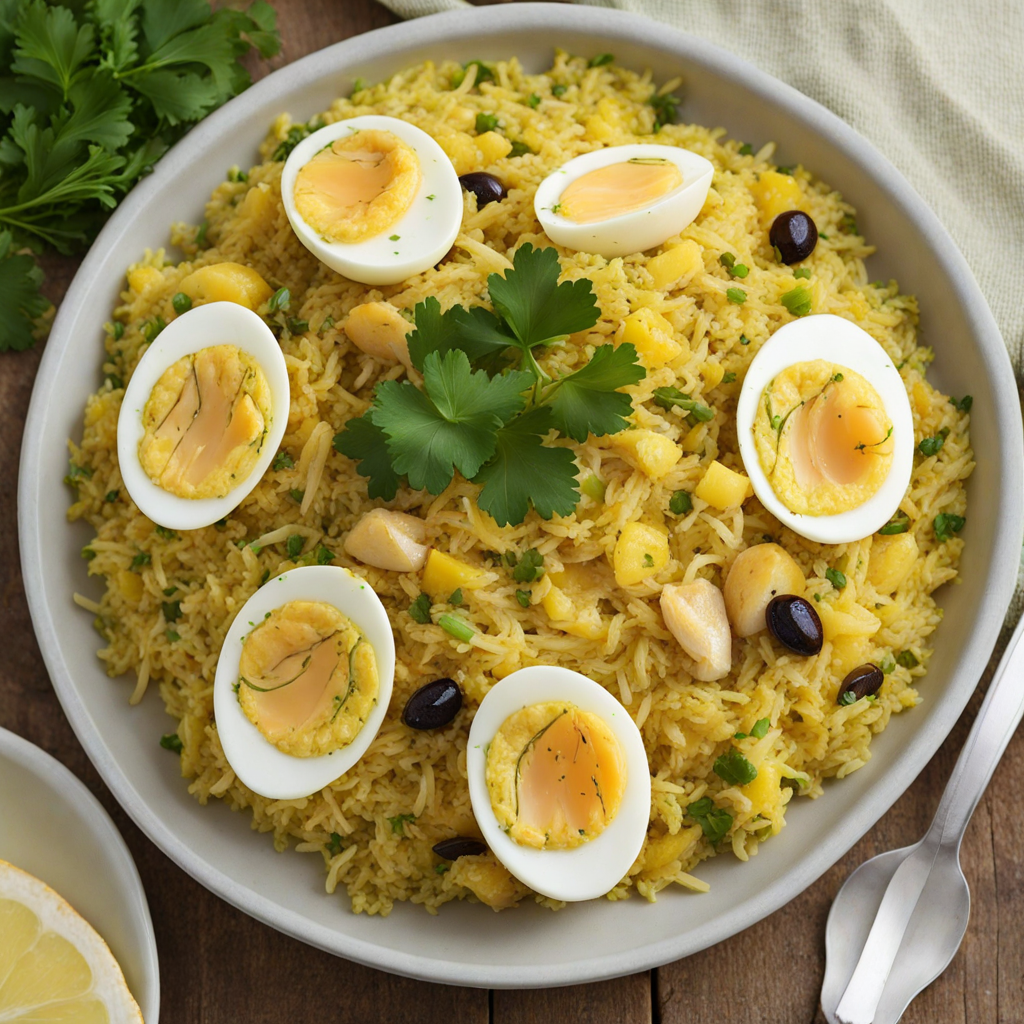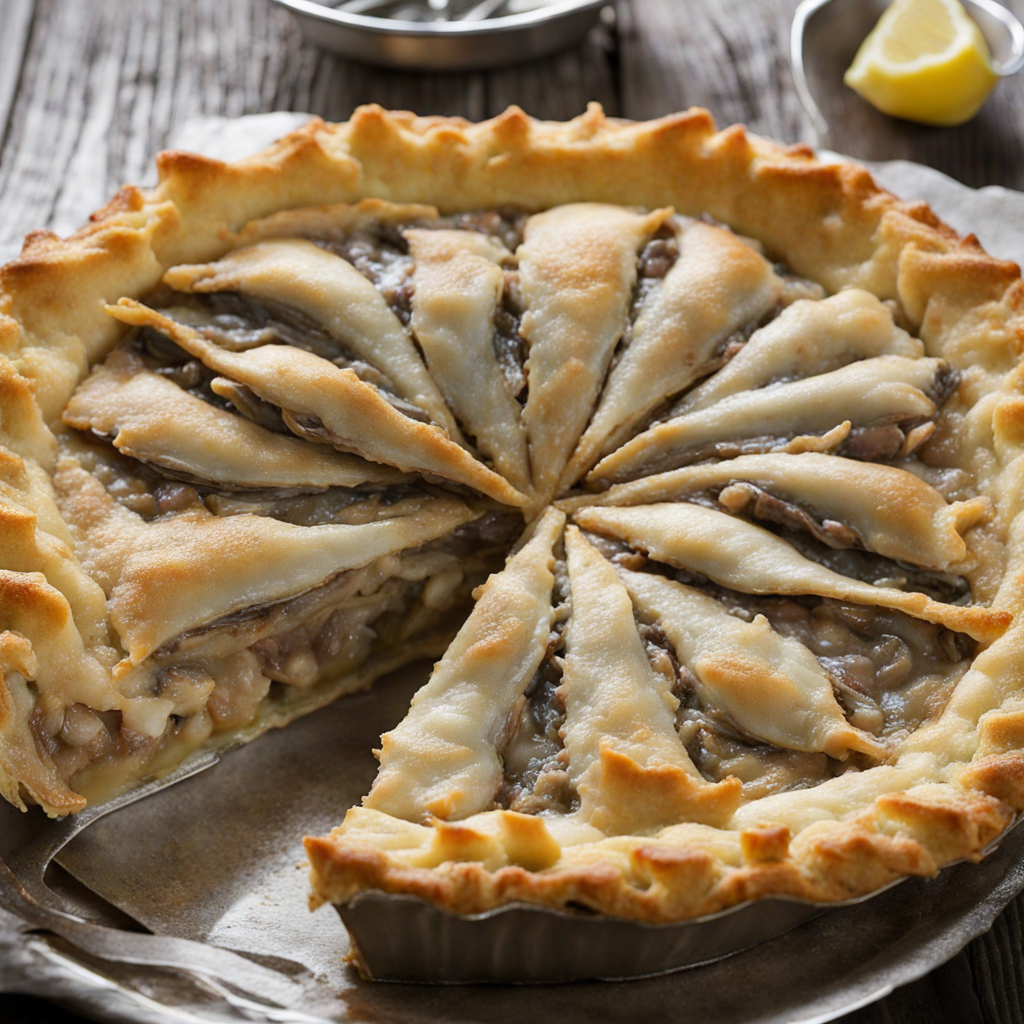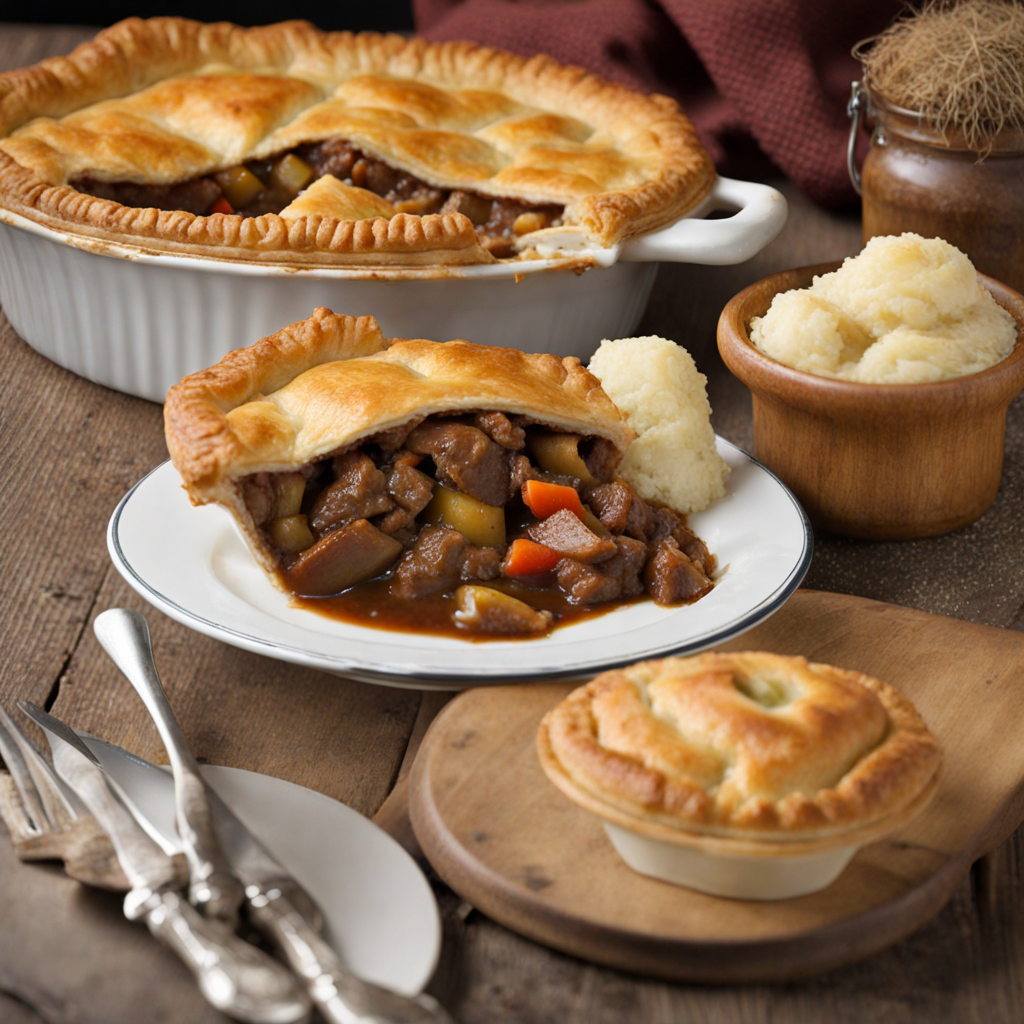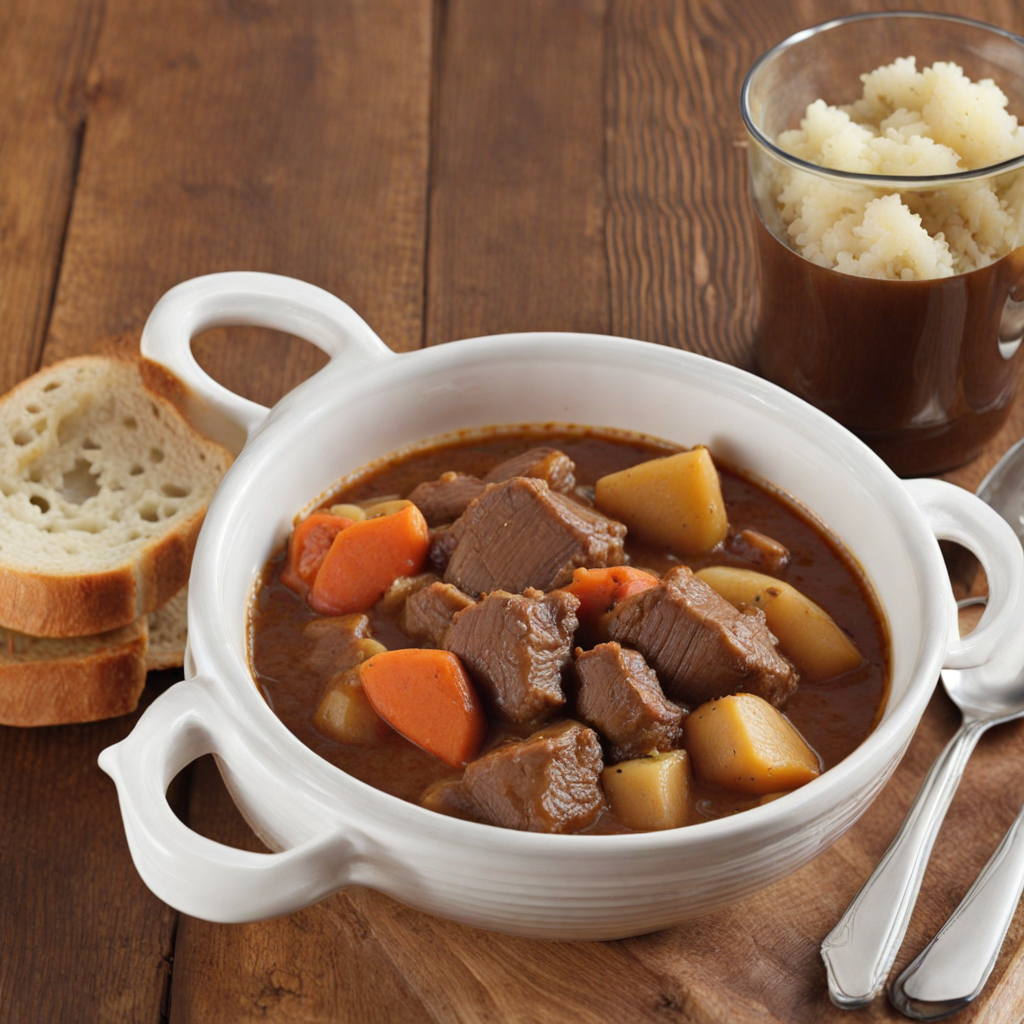Kedgeree
Kedgeree is a delightful dish that beautifully marries the flavors of smoked fish, typically haddock, with perfectly cooked rice. Originating from the British colonial era, it showcases a unique blend of Indian influences and traditional British comfort food. The fish is often poached in milk to enhance its rich flavor and is flaked into the dish, which is then combined with fragrant basmati rice. This harmonious combination creates a dish that is both hearty and comforting, making it an ideal meal for any time of day, whether for breakfast, lunch, or dinner. To elevate the dish further, Kedgeree is often seasoned with a medley of spices such as turmeric, which gives the rice a striking golden hue, and curry powder, adding warmth and depth to the overall flavor profile. Freshly chopped parsley or coriander is commonly sprinkled on top, providing a burst of color and freshness that perfectly balances the richness of the smoked fish. Hard-boiled eggs are typically sliced and laid atop the dish, contributing creaminess and an additional layer of texture. The beauty of Kedgeree lies in its versatility; while the classic version features smoked haddock, modern interpretations may include other types of fish or even vegetarian alternatives. Each bite offers a delightful experience of smoky, savory, and subtly spiced flavors, creating a satisfying meal that is both nourishing and indulgent. Whether you are familiar with British cuisine or exploring new culinary horizons, Kedgeree promises to be a memorable gastronomic adventure.
How It Became This Dish
The Engaging History of Kedgeree: From Colonial India to British Breakfast Tables Kedgeree is a dish that epitomizes the rich tapestry of cultural exchange, colonial history, and culinary evolution. A delightful mixture of smoked fish, rice, boiled eggs, and spices, Kedgeree has become a staple of British cuisine, particularly associated with breakfast. Its story, however, stretches back to the Indian subcontinent and is deeply intertwined with the British colonial experience. #### Origins: A Dish Born from Cultural Exchange Kedgeree’s roots can be traced back to a traditional Indian dish known as "khichri," which consists of rice and lentils cooked together. The name "khichri" is derived from the Hindi word "khichri," meaning a mixture. This comforting dish was often made with various spices, and it served as a staple for many locals, especially during the monsoon season when fresh vegetables were scarce. As the British Empire expanded into India during the 19th century, British soldiers and expatriates were introduced to local foods, and khichri soon adapted to suit Western tastes. The introduction of smoked fish, particularly haddock, was a significant turning point for the dish. This was likely influenced by the British penchant for preserving fish, a practice prevalent in coastal regions of the UK. The use of smoked fish in Kedgeree likely originated from the Scottish tradition of smoking fish, which was then combined with the Indian methods of cooking rice and spices. #### The Transformation: From India to Britain Kedgeree made its way to Britain, particularly during the Victorian era, when the British upper class developed a fascination with exotic cuisines. The dish was first mentioned in British cookbooks in the early 19th century, notably in the 1820s. The recipe evolved to include not only smoked fish but also ingredients such as hard-boiled eggs and a variety of spices including curry powder, which was becoming increasingly popular in British households due to the colonial influence. One of the earliest recipes for Kedgeree appeared in the 1860s in "The Cook's Oracle" by William Kitchiner. This cookbook, aimed at a middle-class audience, highlighted Kedgeree as a refined dish suitable for breakfast or a light meal. By this time, Kedgeree had shed much of its Indian identity, taking on a distinctly British character. The inclusion of boiled eggs and the use of curry powder, a British adaptation allowing for a milder flavor, became defining features of the dish. #### Cultural Significance: Breakfast and Beyond Kedgeree became a popular breakfast item among the British elite in the late 19th and early 20th centuries, often served in upscale hotels and during formal gatherings. It was praised for its nutritional value, combining protein from the fish and eggs with carbohydrates from the rice. The dish's association with breakfast is particularly interesting, as it reflects the Victorian ethos of a hearty morning meal necessary to sustain a busy day of work and social obligations. The dish also embodies the British fascination with India during the colonial period. It serves as a culinary reminder of the Empire's impact on British society and its food culture. As the empire receded, Kedgeree remained a beloved dish, a symbol of the lasting legacy of colonial influence and the globalization of food. #### The Evolution of Kedgeree: Modern Interpretations Over the years, Kedgeree has continued to evolve, adapting to contemporary tastes and dietary preferences. While traditional recipes still exist, modern interpretations have emerged that experiment with different types of fish, such as salmon or even vegetarian versions using smoked tofu. Some contemporary cooks have even ventured into fusion territory, adding ingredients like asparagus or saffron, infusing the dish with new flavors and textures. The rise of health consciousness and dietary restrictions has also influenced Kedgeree's popularity. Many now appreciate it as a gluten-free dish rich in protein and healthy fats. The versatility of Kedgeree allows it to fit into various meal occasions, whether as a hearty breakfast, a light lunch, or a dinner dish. #### Kedgeree in the 21st Century: A Culinary Staple Today, Kedgeree enjoys a renewed popularity, especially in the context of British brunch culture. Cafés and restaurants across the UK feature Kedgeree on their menus, often with a creative twist. The dish is celebrated at food festivals and has been embraced by home cooks eager to recreate this historical meal. The revival of interest in heritage foods and traditional recipes has further solidified Kedgeree's place in the modern culinary landscape. Cookbooks and online platforms dedicated to British cuisine frequently include Kedgeree, showcasing its adaptability while honoring its historical roots. #### Conclusion: A Dish with a Story Kedgeree is more than just a dish; it is a narrative of cultural exchange, colonial history, and culinary adaptation. From its humble beginnings as khichri in India to its status as a beloved British breakfast staple, Kedgeree tells a story of globalization and the blending of culinary traditions. Its journey reflects the complexities of British colonial history and the ongoing evolution of food culture. As we enjoy a plate of Kedgeree today, we partake not only in a delicious meal but also in a rich history that spans continents and centuries. Whether served with a sprinkle of fresh herbs or a dash of modern flair, Kedgeree remains a testament to the enduring power of food to connect us to our past, our cultures, and each other.
You may like
Discover local flavors from United Kingdom







